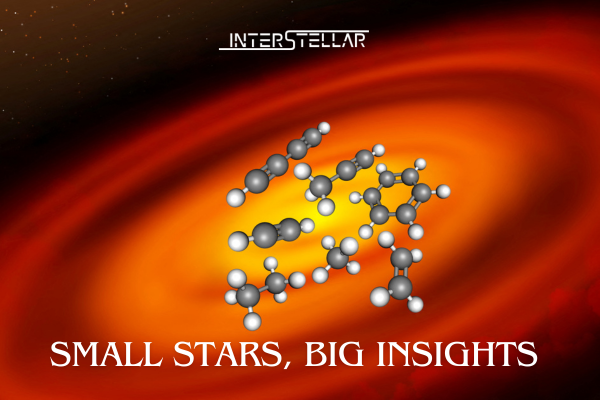Small Stars and Their Unique Planetary Systems
Stars the size of our sun are not the most common in the Milky Way. Much smaller stars are more prevalent and host the majority of rocky planets in our galaxy. These planets are the main focus for scientists searching for worlds that could support life.
Insights from New Research
Recent studies have shed light on how planets form around these small stars, known as very low mass stars (VLMS). The findings show significant differences in the chemical makeup of planet-forming disks around VLMS compared to those around sun-like stars.
The James Webb Space Telescope has provided valuable data on a protoplanetary disk surrounding a newborn star named ISO-ChaI 147. This star has a mass about 11% of the sun, a diameter about 43% of the sun’s, and only 2% of its luminosity.
Located roughly 625 light years from Earth, ISO-ChaI 147’s disk is carbon-rich with no water vapor detected. This contrasts with the oxygen-rich, water vapor-filled disks around sun-like stars.
Implications for Habitability
This chemical difference might influence the future habitability of rocky planets forming around these small stars. “A planet mainly requires, among other things, water to be in liquid state and have a suitable atmosphere for it to be habitable,” explained Aditya Arabhavi, an astrophysicist at the University of Groningen and lead author of the study published in the journal Science. Although the unique environment of VLMS disks could strongly impact planetary composition and habitability, predicting its exact effects is challenging.
Stars form when interstellar gas and dust clumps collapse under gravity. The leftover material forms a disk around the nascent star, feeding its growth and often leading to planet formation. Disks around sun-sized stars contain more material, making these stars more likely to have gas giant planets like Jupiter and Saturn.
Targeting Very Low Mass Stars
“Very low mass stars are the most common stars in our Milky Way,” noted Thomas Henning, astrophysicist and co-author of the study from the Max Planck Institute for Astronomy. These stars are prime targets for finding rocky planets because their planet-forming disks are typically too small to form gas giants but large enough to form rocky planets.
Scientists have already identified rocky planets orbiting VLMS, including some in the “habitable zone” where conditions might support life. “I would expect that the planets would remain habitable if they are located in the zone where liquid water can exist,” Henning said.
Future Observations
ISO-ChaI 147, still in its infancy, may eventually become a red dwarf, a type of very low mass star. Its diameter is only about four times greater than Jupiter’s, whereas the sun’s diameter is about ten times larger than Jupiter’s.
The James Webb Space Telescope, which began operating in 2022, has also detected ethane and other carbon-rich gases in ISO-ChaI 147’s disk. These gases had never been seen before in such a disk.
“Webb is certainly helping us by providing invaluable data that was never possible before,” Arabhavi stated. Previous studies with the now-retired Spitzer Space Telescope suggested differences between planet-forming disks around VLMS and sun-like stars, but the extent of these differences is only now becoming clear.



